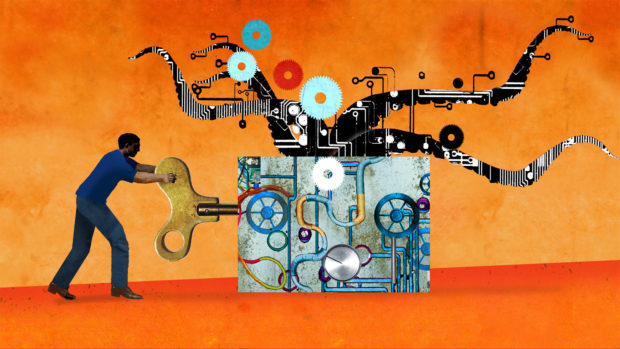Let’s just dive into this article for a moment. It’s a long one from Harvard Business Review.
I want you to take a look at 17 factors they believe are shaping the future of work:
The Forces Shaping the Future of Work
Accelerating Technological Change
- New technologies that replace human labor, threatening employment (such as driverless trucks)
- New technologies that augment or supplement human labor (for example, robots in health care)
- Sudden technology-based shifts in customer needs that result in new business models, new ways of working, or faster product innovation
- Technology-enabled opportunities to monetize free services (such as Amazon web services) or underutilized assets (such as personal consumption data)
Growing Demand for Skills
- General increase in the skills, technical knowledge, and formal education required to perform work
- Growing shortage of workers with the skills for rapidly evolving jobs
Changing Employee Expectations
- Increased popularity of flexible, self-directed forms of work that allow better work-life balance
- More widespread desire for work with a purpose and opportunities to influence the way it is delivered (for example, greater team autonomy)
Shifting Labor Demographics
- Need to increase workforce participation of underrepresented populations (such as elderly workers, women, immigrants, and rural workers)
Transitioning Work Models
- Rise of remote work
- Growth of contingent forms of work (such as on-call workers, temp workers, and contractors)
- Freelancing and labor-sharing platforms that provide access to talent
- Delivery of work through complex partner ecosystems (involving multiple industries, geographies, and organizations of different sizes), rather than within a single organization
Evolving Business Environment
- New regulation aimed at controlling technology use (for example, “robot taxes”)
- Regulatory changes that affect wage levels, either directly (such as minimum wages or Social Security entitlements) or indirectly (such as more public income assistance or universal basic income)
- Regulatory shifts affecting cross-border flow of goods, services, and capital
- Greater economic and political volatility as members of society feel left behind
Some of that stuff is pretty buzzword-y, yes. But all of it is happening somewhere right now.
Now I want you to digest this summary of what happens when you ask “leaders” vs. “employees” about disruption — >
When asked to rate the impact that each of the 17 forces would have on their work lives, using a 100-point scale, the employees rated the force with the strongest impact 15 points higher than the force with the weakest impact. In comparison, there was only a nine-point spread between the forces rated the strongest and the weakest by managers.
In fact, the leaders seemed unable or unwilling to think in differentiated ways about the forces’ potential for disruption. When asked about each force, roughly a third of them described it as having a significant impact on their organization today; close to half projected that it would have a significant impact in the future; and about a fifth claimed it would have no impact at all. That’s a troubling level of uniformity, and it suggests that most leaders haven’t yet figured out which forces of change they should make a priority.
Yea. This is all moving towards a problematic place.
The problem with leaders
A lot of times, because they only spend time with people like themselves and around their pay grade, they don’t know the real issues in their business. They don’t know what people are saying and reacting to because they don’t make any attempt to discuss anything except financial margins.
Many big dogs tend to frame disruption exclusively as a tech thing, because that’s the central narrative of the market and the LinkedIn sidebars they see periodically. Disruption is significantly more than “a tech thing.” In reality it’s about your ways of internally operating needing to change, but very few leaders realize this. They are too slammed with meetings, partnerships, prospects, and travel.
Also, by the literal definitions of the words involved, believing in disruption means believing less in conformity. But leaders love conformity and process, because it’s crucial to scale. When all you know is “I want conformity!” but then understanding disruption means you need to embrace that less, things can get confusing.
And most leaders get to their perch in a biz and think “I know everything now! I am a leader in this business!” They are less likely to prioritize learning, which has been shown in 47,822 studies. They also don’t have time for much around development of new skills. So they naturally assume they know best because they arrived at this perch, and that employees don’t know as much as them or even are lazy. There’s not a lot of trust in many organizations.
So the top dogs assume “These employees can’t adapt to the disruptive tech that’s coming for us!” And the lower dogs say “These idiots barely even understand their business!” Good little ecosystem. Wonder why people don’t like work?
What can be done?
Leaders need to — >
- Listen to people throughout their business
- Realize disruption is about way more than technology
- Stop thinking only they can drive the ship
The likelihood of those three things happening is incredibly slim at most places, especially with a million software sales bros in the world. You can fix communication at work, although admittedly it’s not easy.
If you want a functioning organization that can withstand the challenges of disruption, though, I’d start by realizing those challenges aren’t exclusively in the domain of tech, and can’t exclusively be solved by tech either.
